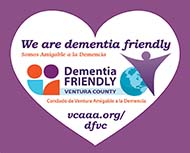By: Sherry Netherland, Director of Special Projects for Assisted Healthcare Services
“I don’t have time to exercise!” That’s why I don’t like to call fitness Exercise. The “E” word may turn you off, but being sedentary should be what scares you. A sedentary lifestyle will shorten your life, a fitness lifestyle will lengthen it. You choose. Immobility is your enemy. Fitness is activity – any activity.
The number on the scale is not the important number. There is no “normal” weight; however, your blood pressure, your blood sugar, and your cholesterol levels matter. If these numbers are normal, you are healthy, even if you’re a plus-sized man or woman. We perceive the “E” word as something we should start doing, but don’t know how to start. In reality, you can be fit every day without having to lift weights, run a marathon or ever step foot in a gym. You don’t need special equipment, and you don’t need special clothes. The best way to remind yourself to do this routine is to schedule it on your Outlook calendar – like a meeting. You now you have a meeting with yourself. This entire routine can take 15-20 minutes. Schedule it during 2 ten minute breaks.
LEGS (Flats or sneakers are helpful.)
1. Desk Chair Ballet (only if your desk chair has wheels)
a. Lower your desk chair to put your knees at a right angle.
b. Sitting with your arms crossed across your chest, use your feet to walk yourself forward. Walk forward for 30 seconds (or you run out of room!).
c. Push yourself backwards for 30 seconds or the same distance.
d. Alternative choreography: if space and safety allow, circle your desk.
e. Advanced variation: Reach up, fully extending your arms. Bring your arms up and down while moving forward and backward in your chair
2. Pop Goes the Weasel
a. Find a sturdy chair without wheels.
b. Stand up and sit down. Try to do it 5 times in a row. (Add 2 each week until you can do 20 in a row.)
ANKLE FLEXIBILITY
1. Sit in your chair, extend your leg or cross our legs if you can. Pretend you are writing the alphabet with your foot. Do upper case and lower case (try cursive!). Do each foot.
UPPER ARM/SHOULDERS/CHEST
1. Chair Pull/Push (if your desk chair has wheels)
a. Sit at your desk. Lift your feet. Push yourself away from your desk until your arms are fully extended
b. Gripping the edge of your desk, pull yourself back..
c. Push and pull 10 times.
2. Farewell to Flabby Arms
a. Stand with your back to the wall, close enough to be able to touch your palms to the wall behind you.
b. Push your palms into the wall. Hold that contraction and count to 5. Repeat three times.
3. Isometric Prayer
a. Put hands together in front of your chest in a “prayer” position
b. Push your hands together and hold that contraction for a count of 10.
BACK STRETCH #1
1. Lower chair so knees are at a 90 degree angle.
2. Sit facing forward.
3. Twist your upper body to the right looking back over your shoulder. If you chair has arms, grab the arms of your chair to help you twist. Hold for 10 seconds switch sides, do three times.
BACK STRETCH #2
1. Lower your desk chair so your feet are flat on the floor.
2. Lean forward, resting your upper body on your thighs. Let your hands fall naturally.
BACK STRETCH #3
1. Clasp your hands in front of you, arms fully extended.
2. Raise your clasped hands until they are over your head. Reach up as high as you can. Count to ten, repeat three times. (If you are plus size and cannot keep your hands in clasped position when they are over your head, grasp a towel between your hands.)
HANDS STRETCH
1. Extend your arm in front of you, holding your palm out as if signaling “Stop.” Gently pull your fingers back with you opposite hand. Count to 10, repeat three times.
Caution: Never leave your hand resting on your mouse for prolonged periods of time. Moving you hand often will prevent stiffness.
©2008 Sherry Netherland is the Director of Special Projects for Assisted Healthcare Services, a Medicare certified, CHAP accredited home health agency with 7 branches in California and Arizona. She founded the Assisted Speakers Bureau and she speaks on a variety of healthcare related issues. To learn more about private duty nursing, home health care and hospice and how Assisted can help, www.assisted1.com/home_health_care.







